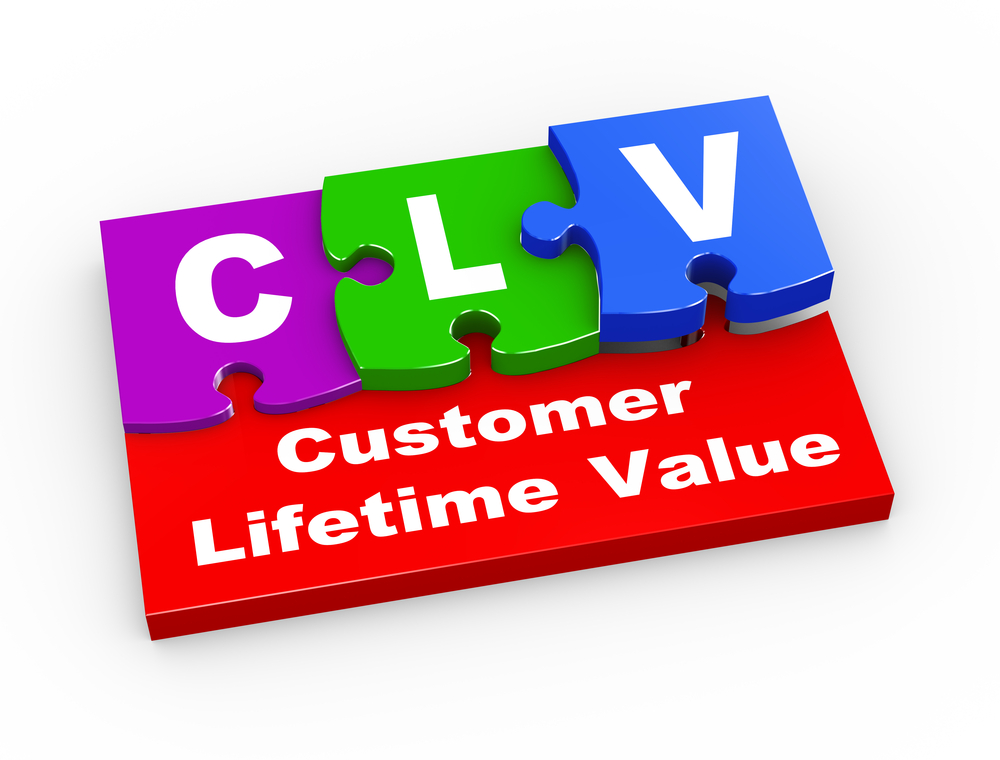How much can you afford to spend to acquire a new customer? It all depends on how much value a new customer generates for your organization. Some companies have very expensive products that yield sizable profits, so they can afford to spend tens-of-thousands of dollars to acquire a new customer; others may be on the opposite end of the spectrum and can’t pay much at all.
The best practice is to start by measuring the Customer Lifetime Value (CLV) of your customers. Simply put, it’s the amount of Profit (Revenues – Operating Expenses) you expect to earn during the course of your relationship with a customer – from the first purchase to the last. (More sophisticated companies also include a timing element of when that profit occurs). When CLV is clearly understood, marketers can then set Customer Acquisition Cost (CAC) goals that will provide an acceptable return on investment (ROI) to the company.
Let’s start by looking at Revenue. So you acquire a new customer and then what happens? The answer varies widely based on business model – here are a couple of examples for illustrative purposes:
- A new customer purchases 50 hours of tutoring services for their child. How many times will they renew, if at all? Is there a younger sibling that will need tutoring in a year or two? Will they refer other families to the company? (This referral dynamic was incredibly valuable to one of our clients for whom we built a CLV model – 30% of all new customers eventually referred another family, who in turn would purchase, renew, and make referrals of their own).
- A subscription service (e.g. streaming audio or identity protection) acquires a new customer. For how many months will they pay the monthly fee before they cancel, if they cancel at all? Can they be upsold or cross-sold during the relationship?
Of course the activity of one single customer doesn’t really matter. What’s important is the aggregation of customers to get a big-picture view of average customer revenue.
Operating Expenses are the second important component of CLV – what does it cost to actually deliver the product or service? Depending on the business model this can include many different factors, ranging from manufacturing to distribution to servicing costs. Like with revenue, what’s important is the average customer operating expense.
Bringing it all together, the CLV of an average customer is the average revenue minus the average operating expense.
Implications for Marketers
The first and most obvious implication is that CLV, along with guidance from company leadership, will determine Customer Acquisition Cost goals. For example, let’s consider two companies, each with $1,000 customer CLV. One company is highly focused on profitability, so sets a CAC target well below the CLV – maybe $350 – and earns a healthy return on its marketing investment. The other company, however, is highly focused on growth, so is willing to pay a lot more – maybe even up to $1,000 and simply break even. We’ve worked with both types of companies – the key is to ensure that both customer CLV and company goals are clear.
The more nuanced implication is at the segment level, where CLV may vary widely. For example, you might find that younger customers have significantly higher (or lower) CLV compared to older ones. Or you might find differences based on acquisition channel – maybe digital generates a very different customer compared to traditional channels. You just don’t know until you look at the data. But if you can find meaningful differences (upon which you can execute), then you can optimize your marketing by setting CAC goals at the segment level.
Does your company have a solid understanding of CLV? How do you use it in your role?

